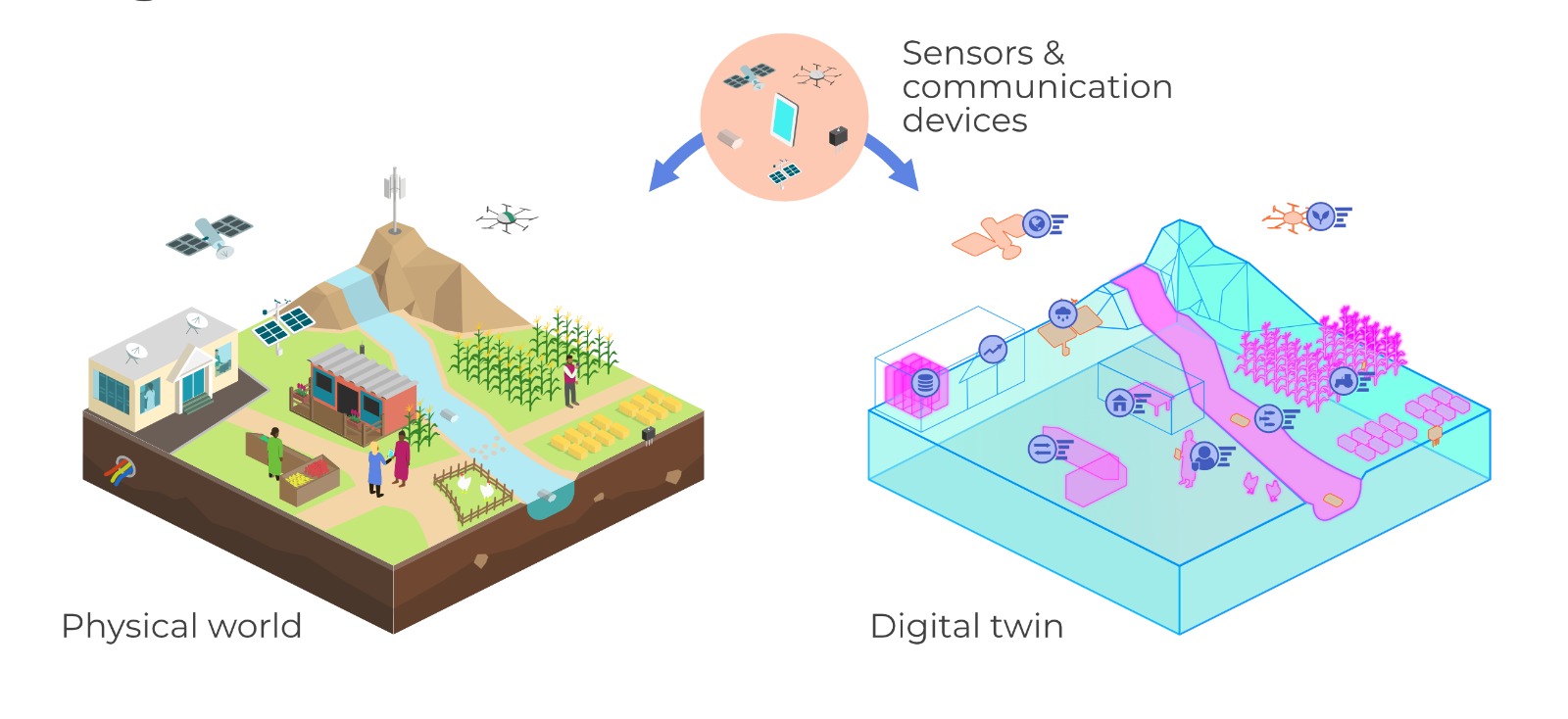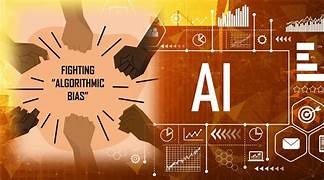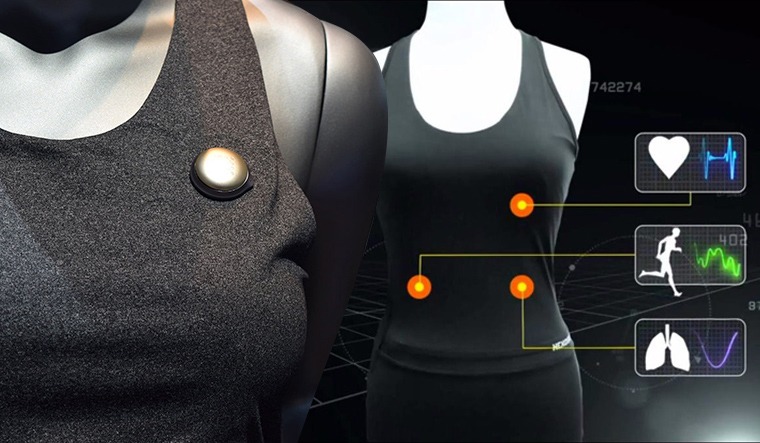
28. Digital twins for ecosystems: simulating forests, coastlines, coral reefs.
Digital twins are transforming ecosystem management by creating virtual, real-time replicas of forests, coastlines, and coral reefs. By integrating AI, sensors, and satellite data, these models simulate environmental changes, predict risks, and test conservation strategies. They empower scientists, policymakers, and communities to make proactive, data-driven decisions that protect biodiversity, mitigate climate impacts, and ensure sustainable stewardship of our planet’s vital ecosystems.
✨ Raghav Jain

Introduction
Nature’s ecosystems are complex, interconnected webs of life. Forests, coastlines, and coral reefs support billions of organisms and provide critical ecosystem services such as carbon storage, climate regulation, fisheries, and storm protection. However, these habitats are increasingly under threat due to deforestation, rising sea levels, ocean acidification, and global warming. Traditional methods of studying and managing ecosystems often struggle to keep pace with the speed of environmental change.
Enter digital twins for ecosystems—an innovative blend of ecological science, artificial intelligence (AI), remote sensing, and computational modeling. A digital twin is essentially a virtual replica of a physical entity that evolves in real-time using data streams from sensors, satellites, and other monitoring technologies. While originally developed in engineering and manufacturing to optimize processes, digital twin technology has expanded into environmental science, creating opportunities to simulate ecosystems and predict their responses to human activity and climate change.
This article examines the rise of digital twins in ecosystem management, focusing on forests, coastlines, and coral reefs. It explores their benefits, challenges, applications, and future directions.
What Are Digital Twins for Ecosystems?
A digital twin is a dynamic digital model of a real-world system. Unlike a static simulation, a digital twin is continuously updated with live data, creating a constantly evolving mirror of the physical world. For ecosystems, this involves:
- Data Input: Sensors, drones, satellites, and IoT devices collect data on tree growth, soil moisture, ocean currents, or coral bleaching events.
- Modeling: AI and computational algorithms build predictive models to simulate ecological dynamics.
- Feedback Loop: Real-time monitoring allows the digital twin to adapt as conditions change in the physical ecosystem.
- Scenario Testing: Managers and researchers can simulate interventions—like reforestation strategies, coastal barriers, or coral restoration—and predict outcomes before real-world implementation.
Digital twins allow stakeholders to move from reactive conservation to proactive ecosystem management.
Applications in Forest Ecosystems
Forests are critical carbon sinks and biodiversity hotspots. Yet, they are under continuous pressure from deforestation, logging, fires, and climate shifts. Digital twins for forests offer new ways to protect and restore these ecosystems.
- Carbon Sequestration Modeling: Digital twins can calculate how much carbon different tree species and growth strategies store, helping governments track climate commitments.
- Deforestation Tracking: By integrating satellite imagery with on-the-ground sensors, forest twins can detect illegal logging or land-use change in near real-time.
- Fire Prediction and Management: Digital simulations of forest conditions—temperature, soil dryness, wind patterns—allow early detection of fire risks and strategic deployment of resources.
- Biodiversity Hotspot Identification: AI-driven models can map species diversity and predict how climate change alters habitat ranges.
Example: The European Union’s “Destination Earth” initiative is building digital twins of the planet’s ecosystems, including forests, to model climate mitigation strategies.
Applications in Coastal Ecosystems
Coastlines face unique challenges due to sea-level rise, extreme storms, and human encroachment. Digital twins help balance ecological preservation with human development.
- Flood Risk Prediction: Simulating sea-level rise and storm surge impacts on coastlines allows cities to test different infrastructure designs.
- Mangrove and Wetland Restoration: Digital twins show how restoring coastal vegetation reduces wave energy and erosion.
- Urban Planning: Governments can evaluate where to build or avoid development to minimize ecological and human risk.
- Erosion Monitoring: High-resolution digital twins track sand movement and shoreline retreat, guiding sustainable coastal management.
Example: Singapore has developed coastal digital twins to prepare for rising sea levels, integrating hydrodynamic models with urban planning strategies.
Applications in Coral Reef Ecosystems
Coral reefs, often called the “rainforests of the sea,” are among the most endangered ecosystems due to bleaching events, ocean acidification, and pollution. Digital twins offer innovative restoration approaches.
- Bleaching Event Prediction: By monitoring sea surface temperatures and ocean chemistry, reef twins can predict bleaching risks.
- Reef Restoration Simulation: Scientists can model how transplanted corals or artificial reef structures perform under different ocean conditions.
- Fisheries Management: Simulations predict how reef health affects fish populations, supporting sustainable fishing practices.
- Tourism Impact Assessment: Twins can model how human activity, such as diving or boating, affects reef ecosystems.
Example: Australia’s Great Barrier Reef is being digitally mapped through initiatives combining AI, drones, and underwater robots to track coral health and forecast changes.
Advantages of Ecosystem Digital Twins
- Predictive Power: Anticipate natural disasters like fires, floods, or coral bleaching.
- Cost Efficiency: Test restoration strategies virtually before investing in costly real-world projects.
- Policy Guidance: Provide scientific evidence for climate policies and sustainable development.
- Stakeholder Engagement: Interactive simulations make it easier for communities and policymakers to understand ecosystem dynamics.
- Real-time Monitoring: Continuous updates ensure accurate, up-to-date ecosystem assessments.
Challenges and Limitations
While promising, digital twins face several challenges in ecological applications:
- Data Gaps: Remote regions lack sufficient sensors and monitoring technologies.
- Computational Complexity: Modeling entire ecosystems requires vast computing power and advanced AI.
- Uncertainty: Ecological processes are highly complex; predictions may not always align with reality.
- Costs: Building and maintaining digital twins is expensive, especially for developing nations.
- Ethical Concerns: Data ownership, privacy, and potential misuse of ecosystem simulations remain concerns.
Future Directions
The future of ecosystem digital twins lies in:
- Global Integration: Linking local twins into global models for climate resilience.
- AI and Machine Learning: Enhancing accuracy by continuously improving predictive algorithms.
- Citizen Science: Involving local communities in data collection through mobile apps and low-cost sensors.
- Virtual Reality (VR): Immersive digital twins can help policymakers and the public “walk through” ecosystems virtually.
- Climate Policy Synergy: Embedding digital twin outputs directly into international agreements like the Paris Accord.
If successfully developed, digital twins could become the backbone of 21st-century environmental stewardship.
The concept of digital twins for ecosystems has emerged as one of the most powerful and innovative tools in modern environmental science, combining real-time data collection, artificial intelligence (AI), computational modeling, and ecological monitoring to create dynamic, evolving replicas of natural systems such as forests, coastlines, and coral reefs. Unlike static simulations, digital twins are continuously updated mirrors of physical environments, fueled by streams of live data from satellites, drones, IoT sensors, and other advanced technologies, enabling scientists to model, monitor, and predict environmental changes with unprecedented precision. Originally developed in the fields of aerospace and manufacturing to optimize engineering processes, the digital twin concept has now crossed into ecological conservation, where the complexity and fragility of natural systems make it especially relevant. Forests, which act as the planet’s lungs and major carbon sinks, are constantly under threat from deforestation, fires, and climate shifts, making them prime candidates for digital twin modeling. By integrating data from satellite imagery, ground-based sensors, and climate models, forest digital twins can simulate carbon sequestration capacity, biodiversity shifts, and fire risks, offering policymakers the ability to test strategies virtually before implementing them on the ground. For instance, fire prediction models in a digital forest twin can assess soil dryness, wind conditions, and vegetation density to identify areas at risk, helping governments deploy resources more effectively and potentially saving lives and ecosystems from destruction. Similarly, forest twins provide vital insights into biodiversity patterns by mapping species diversity and predicting how changing temperatures or rainfall patterns may force species to migrate, adapt, or disappear. Such insights are not only critical for conservation but also for global climate commitments, since forests account for a significant portion of carbon absorption, and knowing precisely how different tree species or reforestation strategies impact carbon storage allows for evidence-based climate policies. Beyond forests, digital twins are revolutionizing coastal ecosystem management, where the pressures of sea-level rise, erosion, urban development, and increasingly severe storm surges threaten both natural habitats and human settlements. Coastal twins combine hydrodynamic models with ecological and urban planning data to simulate scenarios such as how mangrove restoration might reduce wave energy, how rising seas will reshape coastlines, or how different infrastructure strategies—like seawalls versus natural buffers—perform under various climate futures. In Singapore, digital twin models of coastlines are being used to prepare the city-state for the dual challenges of rising sea levels and urban expansion, helping planners decide where to strengthen natural defenses and where to avoid building altogether. These twins not only serve governments but also empower local communities by making complex environmental risks visible and understandable through interactive, data-driven maps and simulations. Coral reefs, the third focus of ecosystem digital twins, present both unique challenges and extraordinary opportunities. As highly sensitive and biodiverse ecosystems that support millions of people through fisheries and tourism, coral reefs are under existential threat from ocean warming, acidification, and pollution. Digital twins of reefs use data from underwater robots, AI-driven image analysis, and ocean chemistry models to monitor bleaching events, track fish populations, and even simulate restoration strategies such as transplanting heat-tolerant corals or designing artificial reef structures. The Great Barrier Reef in Australia has become a testing ground for reef digital twins, with researchers creating massive datasets that allow them to forecast bleaching risks weeks in advance and prioritize interventions in the most vulnerable areas. This approach not only saves precious time but also directs conservation funds more efficiently, as managers can test and evaluate restoration scenarios virtually before committing resources. The ability of reef twins to model human impacts is equally important; by simulating how tourism or fishing pressures affect reef ecosystems, managers can strike a balance between economic needs and ecological sustainability. Together, digital twins for forests, coastlines, and coral reefs represent a paradigm shift from reactive conservation—where interventions happen after damage is done—to proactive management that anticipates threats, tests solutions, and implements strategies with greater confidence. Their advantages are significant: predictive power allows for early intervention; cost efficiency saves money by reducing failed projects; real-time monitoring ensures data accuracy; and their interactive nature helps engage policymakers, stakeholders, and the public. Yet, this promise comes with challenges. Ecosystems are incredibly complex, and no model can fully capture their intricacies. Data gaps remain, especially in remote or politically unstable regions where consistent monitoring is difficult. Building and maintaining these digital twins requires vast computing power, technical expertise, and significant financial investment, which many developing nations may struggle to afford. Moreover, predictions based on AI models carry uncertainties, and reliance on digital twins without recognizing their limitations could create false confidence. Ethical issues also arise around data ownership, potential misuse, and unequal access to advanced technologies between wealthy and poorer nations. Nevertheless, as computing power expands, AI improves, and citizen science initiatives involve local communities in data collection through mobile apps and low-cost sensors, these challenges are being gradually addressed.
Looking toward the future, the potential applications and evolution of digital twins for ecosystems are vast and transformative. One of the most exciting prospects is the creation of interconnected global digital twins, where local models of forests, coastlines, and reefs are linked together to form an integrated planetary simulation. Such a system could provide real-time insights into how ecosystems interact across scales, revealing, for example, how deforestation in the Amazon might influence weather patterns in Africa or how coastal erosion in one region could affect global shipping routes. This level of integration could become the backbone of international climate resilience strategies, feeding directly into global agreements like the Paris Accord and enabling countries to coordinate their policies with far more accuracy and urgency than ever before. Artificial intelligence and machine learning will play a central role in this future by continuously refining predictive models, learning from new data, and uncovering hidden patterns in ecosystem behavior that humans alone might overlook. Virtual and augmented reality technologies also promise to enhance digital twin applications by creating immersive experiences that allow policymakers, educators, and even the general public to “walk through” a digital forest, reef, or coastline, seeing firsthand how different interventions or climate scenarios play out. This kind of engagement is not just educational but also political, as it can mobilize public support for conservation initiatives and bridge the gap between scientific data and societal action. Additionally, the use of digital twins can empower indigenous and local communities by integrating their traditional ecological knowledge with high-tech monitoring, creating hybrid models that respect both modern science and ancient wisdom. In practical terms, forest digital twins of the future could simulate how different reforestation approaches not only store carbon but also impact water cycles, soil health, and biodiversity corridors, providing holistic insights rather than narrow outcomes. Coastal twins might integrate economic data, simulating how climate adaptation strategies affect fisheries, tourism, and infrastructure costs over decades, giving governments the tools to choose sustainable yet economically viable paths. Reef twins, enhanced with genomic data of coral species, could predict which coral genotypes are most resilient to warming oceans, guiding large-scale restoration projects that have the best chance of long-term survival. However, as digital twins expand, so does the need to address persistent challenges. The cost barrier must be lowered through international funding, open-source technologies, and partnerships that share knowledge across borders. Ethical frameworks must be established to regulate data ownership, ensuring that nations and communities contributing data benefit equitably from the insights generated. Transparency in model building and prediction must also be prioritized to prevent misuse or manipulation for political or commercial gain. In the long term, the vision is for digital twins to act not just as tools for scientists and policymakers but as everyday decision-making resources for humanity. Imagine a farmer consulting a forest twin to understand how local land-use changes affect rainfall patterns, or a coastal town using its digital twin to plan community relocation ahead of rising seas, or a tourism operator engaging with a reef twin to design eco-friendly diving experiences. These scenarios highlight how deeply digital twins could become embedded in global society, transforming not just scientific research but also education, economics, and cultural practices. Despite the hurdles, the direction is clear: digital twins represent a leap forward in how we can interact with and care for the natural world. They offer humanity a chance to shift from being reactive exploiters of ecosystems to proactive stewards who anticipate problems, test solutions, and choose pathways that secure both human prosperity and planetary health. As climate change accelerates and biodiversity loss reaches alarming levels, the urgency for such tools cannot be overstated. Digital twins may not be perfect representations of reality, but they are powerful allies in a world where inaction is no longer an option. Their ability to merge cutting-edge technology with ecological understanding offers hope that even in an age of crisis, innovation can provide new ways to live harmoniously with nature.
Conclusion
Digital twins are transforming how we understand and manage ecosystems. By simulating forests, coastlines, and coral reefs, they provide real-time insights, predictive analytics, and scenario-testing capabilities that were unimaginable just a decade ago. Forest twins track deforestation and carbon cycles, coastal twins predict flood risks and erosion, and reef twins simulate bleaching events and restoration strategies.
Despite challenges—such as high costs, data gaps, and complexity—digital twins hold enormous promise. They offer a way to shift from reactive conservation to proactive, evidence-based ecosystem management. In an era of accelerating climate change and biodiversity loss, digital twins may well be one of humanity’s most powerful tools to safeguard the natural world.
Q&A Section
Q1 :- What is a digital twin for ecosystems?
Ans:- A digital twin for ecosystems is a virtual replica of a natural environment—such as forests, coastlines, or coral reefs—that uses real-time data and AI modeling to simulate ecological processes and predict future changes.
Q2 :- How do digital twins help in forest conservation?
Ans:- They track deforestation, monitor carbon sequestration, predict fire risks, and simulate biodiversity impacts, allowing for more effective forest management and policy-making.
Q3 :- Why are digital twins important for coastal ecosystems?
Ans:- They predict flooding, model sea-level rise, monitor erosion, and help plan infrastructure or restoration projects to protect both human populations and ecosystems.
Q4 :- How can digital twins protect coral reefs?
Ans:- By forecasting bleaching events, simulating reef restoration, predicting fisheries health, and assessing the impact of tourism, digital twins aid reef survival and management.
Q5 :- What are the main challenges of ecosystem digital twins?
Ans:- Challenges include data gaps, high costs, computational demands, predictive uncertainty, and ethical concerns about data use.
Similar Articles
Find more relatable content in similar Articles

28. Digital twins for ecosyste..
Digital twins are transforming.. Read More

Algorithmic bias in non-Wester..
"Exploring how AI systems trai.. Read More

Voice Emotion Analysis: Can T..
Voice Emotion Analysis levera.. Read More

Smart fabrics and e-textiles: ..
Smart fabrics and e-textiles a.. Read More
Explore Other Categories
Explore many different categories of articles ranging from Gadgets to Security
Smart Devices, Gear & Innovations
Discover in-depth reviews, hands-on experiences, and expert insights on the newest gadgets—from smartphones to smartwatches, headphones, wearables, and everything in between. Stay ahead with the latest in tech gear
Apps That Power Your World
Explore essential mobile and desktop applications across all platforms. From productivity boosters to creative tools, we cover updates, recommendations, and how-tos to make your digital life easier and more efficient.
Tomorrow's Technology, Today's Insights
Dive into the world of emerging technologies, AI breakthroughs, space tech, robotics, and innovations shaping the future. Stay informed on what's next in the evolution of science and technology.
Protecting You in a Digital Age
Learn how to secure your data, protect your privacy, and understand the latest in online threats. We break down complex cybersecurity topics into practical advice for everyday users and professionals alike.
© 2025 Copyrights by rTechnology. All Rights Reserved.